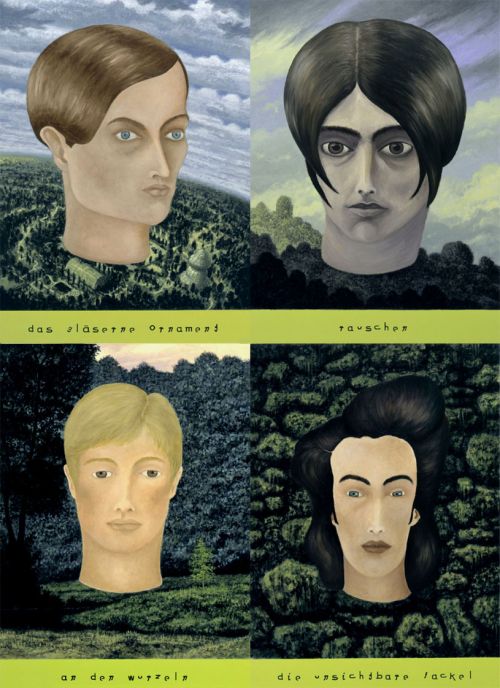Die Dritte Kammer - Der aechte Blumist

Brigitte Franzen
“THE FOURTH NATURE – Gardens in contemporary Art”
Art History Library, Volume 11,
Verlag der Buchhandlung Walther König, Cologne, 2000
THE GARDEN AS A PLACE OF ART-POLITICAL UTOPIA
“In the sense of an artistic utopia, the garden is understood by caroline Bittermann and Peter Duka, who, based on their interest in painting, create a contemporary approach to the picturesque and its anchoring in the garden and the landscape. With this in mind, they are intensively involved with garden history and also express themselves theoretically. The self-created imaginary world of the “Third Chamber” serves them as a kind of “think tank”; as they themselves say, “a terrain that we call ‘garden'”. Their original aim was “to pick up where painting left off historically, when painting influenced landscape design and horticulture led to new painterly motifs”. In the meantime, however, painting has also led them to actual horticultural work, as their project “Das begehbare Bild” for the “Künstlergärten Weimar” shows.
In accordance with the premise of the “world model” garden, the “Third Chamber” houses a kind of garden cosmos consisting of four gardeners, who can also be understood as variations of one and the same type. These “Fowerists” represent four different functions of the garden and the gardener. They embody the architect type, who acts as a theorist, planner and heterotopist; the artist type, who is characterised as a historian, futurist and visionary; the gardener type, who is a craftsman, ecologist and pragmatist; and the curator, who is the manager, politician and demagogue. The four gardeners are assigned four different subterrains within the “Third Chamber”. The architect manages the base camp with the Belt, garden library and glasshouses. The artist looks after the “heart cell”. He undertakes planting, maintains an underground laboratory and sculptural studios. The nursery with water features, growing basins and compost heaps is assigned to the gardener. The curator runs a garden museum. He is also in charge of the Folies, the Pomological Cabinet and the Geomantic Office. The unity of these four virtual gardener types with their different facets forms the figure of the “Genuine Flowerist”. Bittermann & Duka create a virtual identity of a gardening principle in contemporary art in the “Third Chamber”. Painting serves to visualise the principle just as much as it represents a model of development that is constantly being refilled and consequently has to serve as a venue for today’s search for the picturesque. In this sense, Bittermann & Duka practise a different form of virtual gardening that sees itself as an aesthetic utopia.”